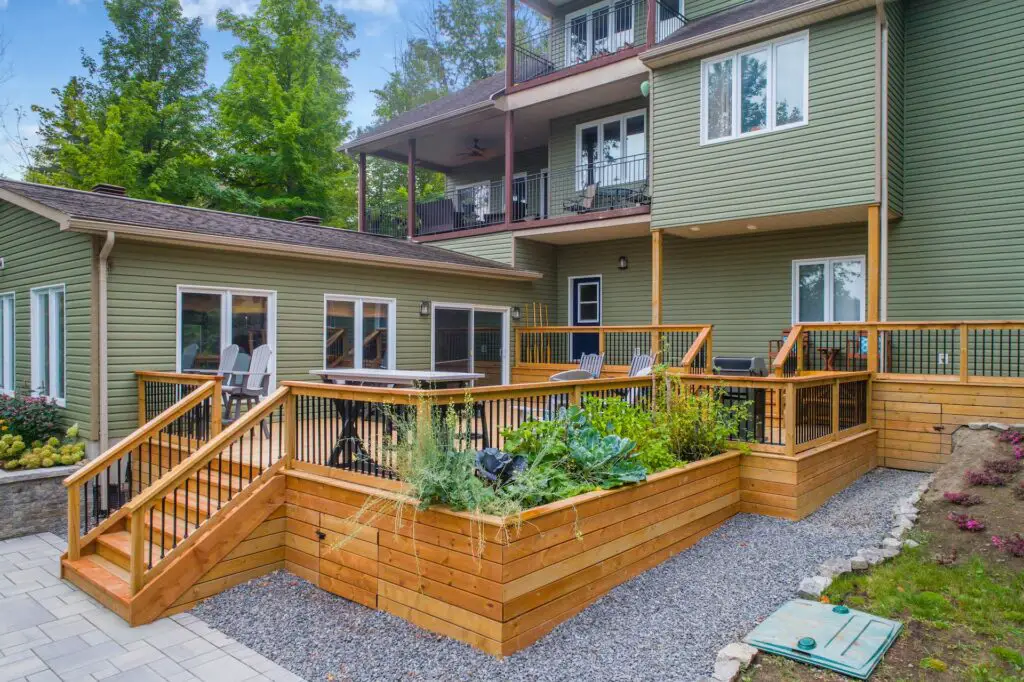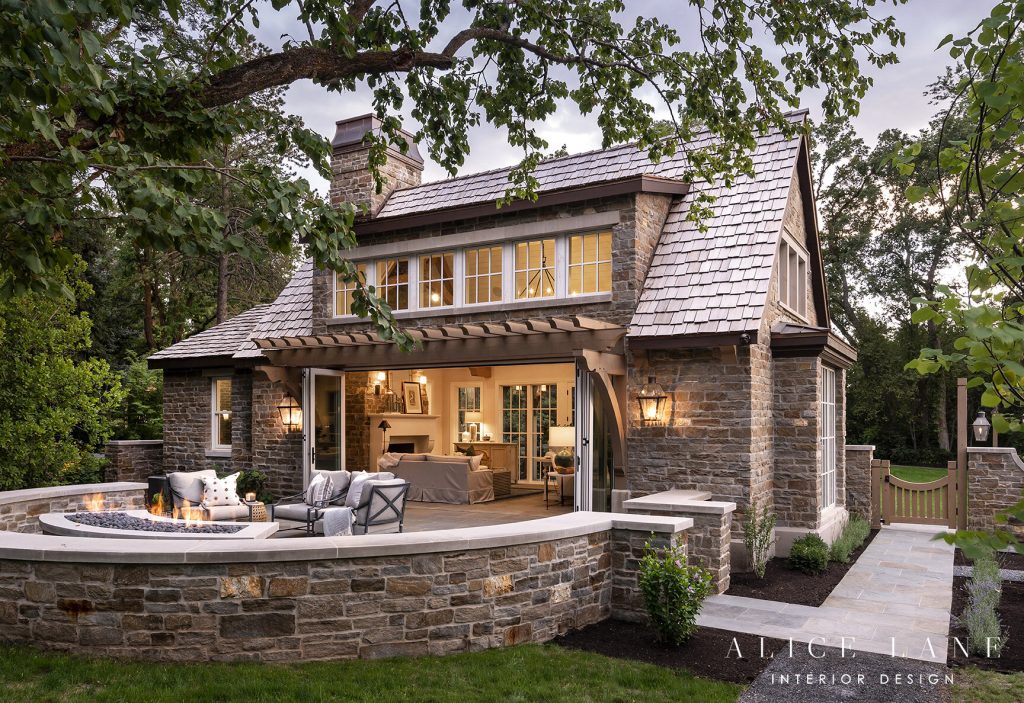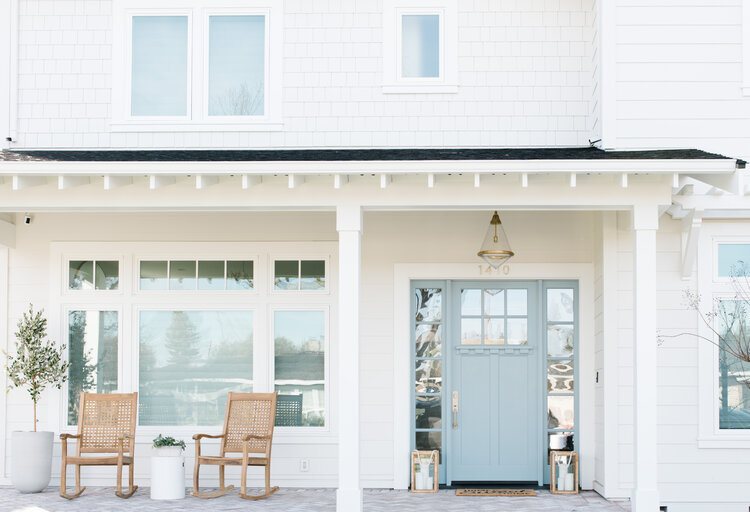Adding a deck is inarguably one of the most popular home projects today. Not only does a deck expand your living space, but it also adds an architectural feature and value to your home. As such, the demand for decks is steadily rising among homeowners. However, a lot of decision-making and planning goes into building or updating a deck, from establishing a budget to determining the right size deck, material choices, and more.
Unfortunately, most homeowners don’t know where to start when it comes to building or updating a deck. If it’s your first time building or updating a deck, you should go over important considerations and partner with a reputable contractor like Malone’s Landscape. A professional can help you design and plan your new deck to create the perfect outdoor living space for your specific needs. If you’re looking to add a new deck or update your existing one, here are a few important things to consider to make sure you create a beautiful space that meets your expectations:
1. Consider Deck Placement

The first important consideration when adding a deck is determining the ideal placement in your outdoor areas. The best location to build a deck will depend on how you want it to function. If you want your deck to be an extension of your living area, installing it adjacent to your house will allow for seamless indoor-outdoor flow. This will also allow you access to various rooms of your house, like the kitchen.
On the other hand, if you want to enjoy a stellar outdoor view while on the deck, consider building it farther out in the landscape. If strong winds and the scorching afternoon sun make spending time outdoors unbearable, you may want to install your deck in a more sheltered and shadier location. You may also want to consider privacy from neighbors when deciding the best placement for your deck. If you have an existing deck and its current placement isn’t working, you may want to replace your deck entirely, adding a shade structure or a new layout to suit your unique needs.
2. Check Local Regulations
Apart from determining the best placement for your deck, you need to research your local building codes and regulations. The laws and permit restrictions for residential remodeling projects and structure additions will mostly vary depending on where you reside. These guidelines may influence the design, location, and size of the deck you build. Hence, it’s critically important that you contact your city building department to find out the legal procedures and building codes to follow before getting started on the project. For instance, if you want to build a raised deck, you’ll be required to install stairs and safety railings that comply with safety codes.
Hiring a certified deck designer and builder can save you all the hassle and time since they understand the local codes and regulations and will handle your permit application and design approval. Sometimes updating existing decks may not need a permit, but it’s advisable to confirm with local authorities.
3. Consider the deck’s design

Many things can influence the design of your deck, but to get the most out of your deck, ensure its design reflects your activities and interests. Determine how you’ll use the deck as a quiet retreat, an entertainment spot, or a place for dinners and conversations with family and friends. These factors will greatly influence your deck’s design, size, and features. For instance, if you want a place where friends and family can dine comfortably, you should design a large enough deck to accommodate everyone. For dining and lounging, you might consider designing it with different zones.
It’s crucial that you factor in the dimensions for furnishings and amenities into the deck layout and total space. Your deck’s style will also largely depend on your home’s design. While you should tailor your deck’s design to suit its desired purpose and function, it’s also best to ensure it complements your home’s design. To make your deck a seamless extension of your house, ensure its design matches your home’s proportions, lines, and architecture.
4. Select Your Decking Materials
While you may consider choosing cheap decking materials to save money, you may end up spending more on maintenance and sacrificing long-term satisfaction. Consider using high-quality decking materials like composite decking, best known for their durability, less maintenance, and overall aesthetic appeal.
Besides offering greater durability, composite decking is available in various colors, from the trendy gray that mimics weathered redwood to a rich, warm brown that looks like exotic hardwoods. When selecting your deck color, consider the climate and your home’s exterior. For instance, consider choosing medium to dark composite decking colors that blend well with your house if you have a darker home exterior. If you’re unsure which composite decking colors to choose, ordering samples can help determine which color best compliments your exterior design.
You can also choose from the wide selection of materials available for decorative post caps and covers, balusters, and railings. This allows you to create a custom design deck that complements your home while allowing you to enjoy the space for many years without requiring regular maintenance.
5. Budget for Building a Deck

The total costs for building or updating your deck will depend on various factors like design, size, and materials you use. You also need to add in the fees for obtaining permits and labor costs if you hire a professional to help design and build your deck. It’s also best to consider any extras and additions you may want to include in your deck, for instance, built-in seating, lighting, and railings.
Endnote
Considering the things mentioned above when adding a new deck or updating an existing one can help you plan, design, and build an outdoor living space that best suits your unique needs. If your budget allows, ensure you choose quality deck furniture pieces that are comfortable, attractive-looking, and weather-resistant for maximum durability and comfort. Alternatively, consider using furniture pieces you already have in your home that you can replace later.
Besides working through these considerations, partnering with an experienced deck designer can help keep your project on track and within your budget. A professional will help propose new design ideas you may not have considered and refine your design to ensure you create an outdoor living space that you’ll love.
Thanks to maloneslandscape.com for consulting.
























